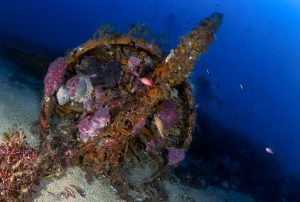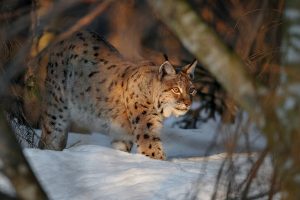About thirty years ago, the Strait of Messina, especially in its Ionian offshoot, represented one of the favorite homes of an extraordinarily intriguing fish: the seahorse. It was in September 1997, in the sea of Saline Joniche in Calabria, that I interacted, for the first time, with a pair of Hippocampus (this is its scientific name). I was with my wife Evelyn and I have a clear memory of that moment, including the intangible confirmation of the heartbeat I felt in photographing it. The seahorse is one of the most unique fish, one of the most bizarre creatures that can be found in the sea, perhaps the most fascinating fish. It is distinguished by a unique and unmistakable aspect, just like its lifestyle that leads it to frequent shallow waters closer to coastal environments. A sought-after creature since ancient times, it was probably Pliny the Elder who first described it (23 – 79 AD) giving it the name of “hippus”, from which its current name derives. The name, which derives from ancient Greek, comes from the fusion of Hippos (horse) and kampos (sea monster). Naturalists of the past even report that the powder obtained from its remains, with the addition of honey or vinegar, was used for the production of miracle drugs as a cure for skin rashes, baldness and the bite of hydrophobic dogs. Aristotle also talks about it in his “Reproduction of Animals”, probably fascinated by the reproductive characteristics of this singular animal. For the Greek poets, the Hippocampus was instead a mythical creature, represented as a horse with the lower part in the shape of a fish or dolphin, through which the Gods sailed the stormy seas. Four seahorses were pulling Poseidon’s chariot in a grandiose scene that several artists of remote times have reproduced in an engaging way, so as to drag the observer into a magical world, populated by little known or unknown animal and plant forms, often the result of fantasy. The seahorse is also an apotropaic symbol. In the past, small images of seahorses were used to ward off bad luck, so much so that they are reproduced in many paintings such as those found in Pompeii, painted on the external walls of houses to defend the tenants from bad luck or on the sides of boats to protect the fishermen and their catch. Transitioning from mythological to natural aspects, the first scientists who studied seahorses were extremely impressed in observing their characteristics. The structure and shape of the “sea horses” is as if they were born from a set of portions of different animals: the head is very similar to that of a horse, the prehensile and elongated tail resembles that of a monkey, the pouch of which the males are endowed with, it traces a little the appearance of that of a kangaroo and the protruding eyes move independently of each other reminiscent of those of a chameleon. In nature there are at least 33 species of seahorses that live between the tropical and temperate marine areas of the planet. They are small fish, thin, with the body protected by a series of rings and bony plates. Their body is very compressed on the sides and is rich in roughness due to the numerous skin rings, more or less thorny according to the species. Noteworthy are the eyes, equipped with independent movements that allow them to observe simultaneously in different directions. What excites the most is to hold the seahorse delicately between the bare fingers of the hand, obviously underwater, to appreciate that strange sensation that the prehensile tail transmits when it twists around the index finger, tightening it as only a child’s hand can do. Although they seem shy and calm, these fish are very voracious: the young specimens are able to eat up to ten hours a day, a period during which they are able to swallow up to 3000 crustacean larvae, exceeding five centimeters in length at two months of age. For reproduction, it is the males – the only living beings on the planet – who are responsible for the birth of the larvae and to give birth to the young. In some cases, seahorses are also monogamous, a unique feature among most of the species living in the sea. The male is clearly recognizable by the presence of the pouch, while the female has a rather rounded abdomen. In spring, when the water begins to rise in temperature, the mating season begins: united in pairs, which can remain together even for a lifetime, the seahorses begin to make unusual and extraordinarily elegant movements, starting to court each other and then mating after a few days. At the moment of birth, the seahorse anchors its tail to a resistant support and begins to expel the young with contractions very similar to those of a human woman in labor. At birth, the small seahorses measure a few millimeters and are fully formed: a miniature reproduction of the adult specimen. The male will always take care of the offspring; on average, the eggs laid vary in number from a minimum of 5 to over 1200: it all depends on the size of the parents. Unfortunately, all the existing species of seahorses are cataloged in the List of Animals at Risk of Extinction (IUCN). According to some estimates, more than 42 million seahorses are sold each year in the Traditional Chinese Medicine market. This request, together with the destruction of their natural habitat, is determining the current “critical situation”. The priorities to be considered for the conservation of the species are the maintenance of coastal natural habitats and above all the development of a specifically educated international community. Many ask me if the hippocampus is really beautiful, nice, grumpy, spiteful and vain … I can never give a complete answer: every time the interaction with it is different and undoubtedly exciting just like the first time. I try to tell it through the studies and shots that I dedicate to this spectacular fish with moving eyes to argue that the seahorse, in addition to being decidedly beautiful, nice, grumpy, spiteful and vain is worthy of being the absolute protagonist of fairy tales and stories. For this reason too, let us help it to save itself.
Horses of the sea

Lo Junkers 52 di Isola delle Femmine, la storia di Zia Ju
*di Giovanni Laganà* E’ una storia – la nostra – che nasce in Sicilia, nell’estate del 1942, in una cornice da sogno: quella del mare di Isola delle Femmine, borgo marinaro situato a pochi chilometri da Palermo. Nel bel mezzo di una guerra mondiale senza precedenti, in una giornata particolarmente assolata, un’inusuale risonanza di motori […]
Continua a leggere
Vita selvaggia, dai boschi alle città, speci sospese fra estinzione e ripopolamento
*di Paolo Di Giannantonio* Ma avete presente quant’è bella la lince? Un animale elegante ma schivo, un predatore determinatissimo ma anche delicatissimo; una specie che sembrava scomparsa dalle nostre foreste e che di tanto in tanto si fa rivedere. Un ridotto numero di esemplari, concentrati sulle Alpi, dalle parti del Parco del Tarvisio ed oltre, […]
Continua a leggere
Le sfide dell’educazione fra guerra e pace
Contrappeso Quando c’è la guerra c’è bisogno di volersi più bene, inteso come volere il proprio bene, ma anche quello di chi e quanto ci circonda. Può sembrare un concetto banale, quello del contrappeso, ma è fin dall’antichità che i filosofi, anche di orientamento più diverso, concordano su un fatto: se è vero che le […]
Continua a leggere









